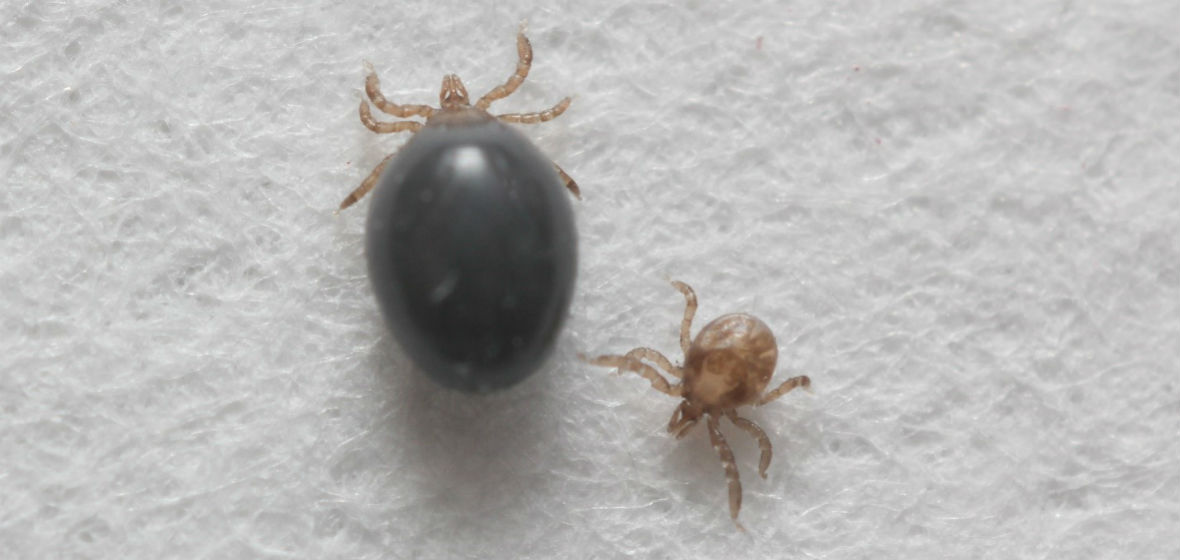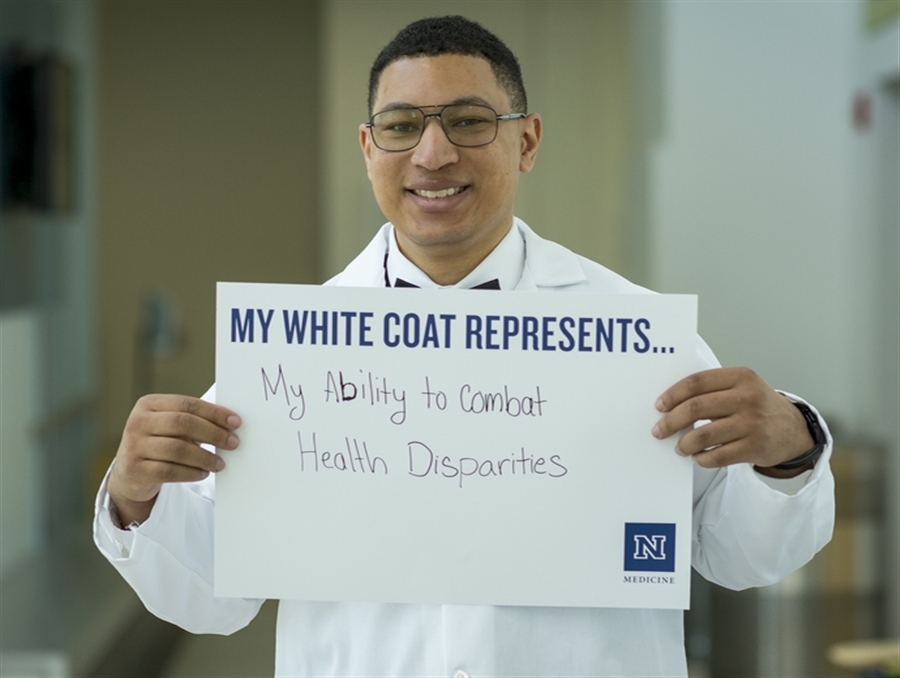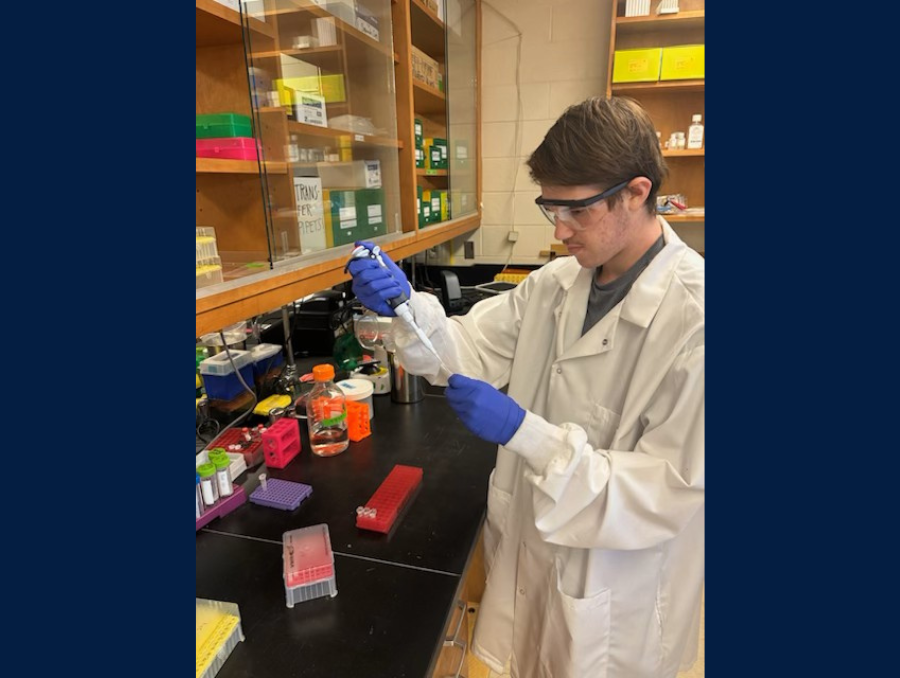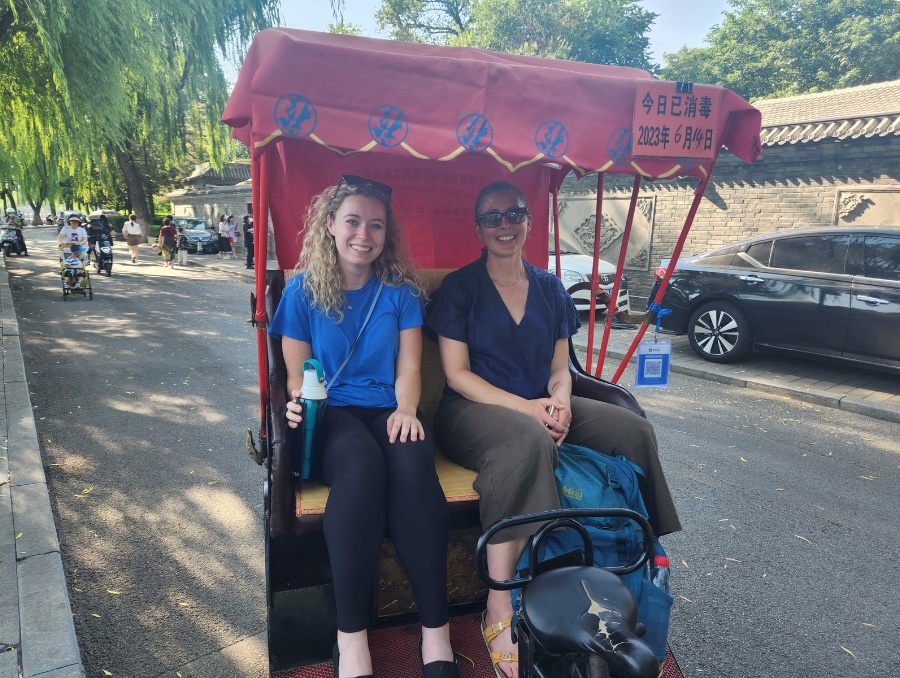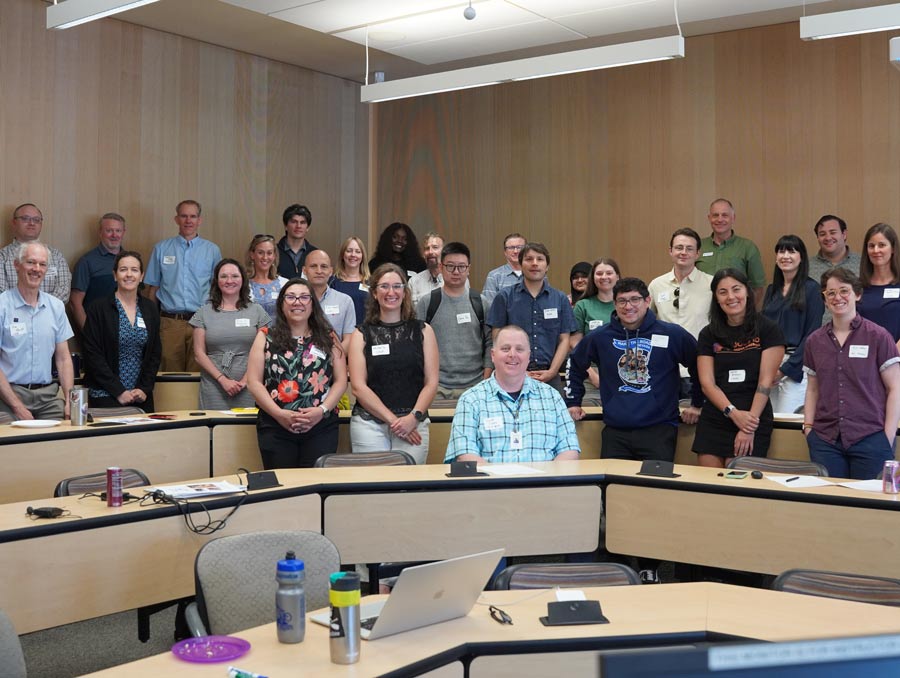For those who are active hikers, or find themselves outdoors often, the reality of a tick bite is not unusual, nor are its potential consequences. Ticks are known for transmitting many diseases in animals and humans, especially the deer tick, which is a known carrier of diseases such as Lyme disease, babesiosis, and anaplasmosis.
Monika Gulia-Nuss, assistant professor in the Department of Biochemistry and Molecular Biology at the University of Nevada, Reno, is working on generating transgenic ticks in her lab, the first of their kind, in order to explore new targets for vector control. Vector control is any strategic method used to limit organisms that spread disease pathogens.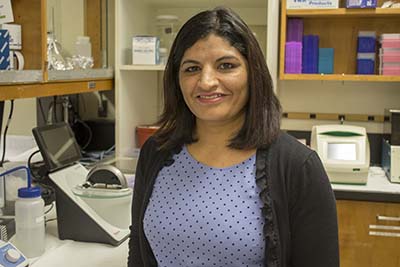
Gulia-Nuss' lab works specifically on the deer tick and has received a $407,000 grant from the National Institute of Health to continue studies.
"Our focus is to be able to manipulate these ticks in the lab so that we can understand the functions of different genes," Gulia-Nuss said. "This way we can have a better approach for finding new vaccine, drug or insecticide targets."
"This particular project that we just got awarded from the National Institute of Health is to develop methods for generating transgenic ticks for functional studies," Gulia-Nuss said.
Transgenic in this sense means deleting or over-expressing a gene in an organism - in this case the tick. Generating transgenic ticks will not only help the Gulia-Nuss lab explore new areas of vector control, but also help in understanding genes involved in tick-pathogen interactions.
"One of the major impediments in tick research is that we do not have any genetic tools to dissect out the functions of their genes," Gulia-Nuss said.
The lab knows the functions of certain genes in other organisms, but those specific tools are not readily available when studying ticks, so Gulia-Nuss and her team are building tools.
Originally a mosquito biologist, Gulia-Nuss moved into tick research with little experience with the bloodsucking arachnids. Studying ticks has previously proven difficult for many labs and researchers in terms of time.
"I didn't know that the tick life cycle is two years," Gulia-Nuss said. "That was a surprise for me, because with mosquitoes, I was used to 10 days of life cycle, and here I had this organism that takes two years, which is another impediment in tick research."
Gulia-Nuss' first move in her transgenic research was to shorten the life cycle of the ticks she was working on.
"When I set up my lab here at the University in 2016, my first goal was to cut the life cycle short to a more manageable time," she said. "We were able to bring it down to five months from two years, which was a big step forward for us."
The lab was able to do this by placing the ticks in an incubator set to a higher temperature, increasing their metabolism and therefore causing them to molt faster.
The second step for Gulia-Nuss was to inject tick embryos, something that no one else had ever done before.
"We didn't even know what manipulation we needed to inject embryos," Gulia-Nuss said.
Gulia-Nuss' collaborator and the co-investigator on this grant, Robert Harrell, is an expert in transgenic insects and manages the Insect Transformation Facility at the University of Maryland. Together, they used their expertise in mosquito embryo injections and translated it into the tick research.
"We were able to inject tick embryos, so the shortened life cycle and our ability to demonstrate that we could inject tick embryos were the two main steps that really helped us get this grant," Gulia-Nuss said.
The hypothesis behind the work
The major hypothesis behind the lab's research lies in disrupting insulin signaling in ticks so as to affect parasite development.
"If we disrupt insulin signaling in ticks, that will influence their physiology and their behavior, and potentially the development of the pathogen they carry," Gulia-Nuss said.
Insulin signaling is extremely important for nutrient metabolism, which is in turn, important for all organisms including ticks.
"Nutrients are important for a parasite developing inside an organism because the parasite requires all of their nutrients from the host," Gulia-Nuss said. "To get those nutrients, the insulin signaling of the host should be in perfect order, but if we disturb the insulin signaling in the host, that might affect parasite development."
Affecting parasite development will help the lab to understand pathogen interactions in ticks better, as well as vector control targets for diseases such as Lyme disease.
The lab is planning to use a technology called CRISPR-Cas9, which has the ability to manipulate genes in different organisms without them needing to be a model organism. With this technology, the lab will be able to knock-out genes in the ticks and understand their functions better, such as insulin signaling or other targets.
"It's easier than the previous generation's tools," Gulia-Nuss said. "It's not easy, but definitely easier."
Lyme disease and public health
"Lyme disease is one of the most important vector-borne disease in the United States," Gulia-Nuss said. "CDC reports around 300,000 new cases of Lyme disease annually, mostly in the 14 states in the Northeast and Midwest."
Lyme disease is a tick-borne disease as the bacteria that causes it is carried by the tick. Ticks are blood-feeding organisms and they must feed on vertebrate blood at every developmental stage.
"Ticks go from eggs to larvae, to nymphs to adults, and at every developmental stage, they have to take a blood meal; it's the only thing that they eat, they do not feed on anything else," Gulia-Nuss said.
When ticks take this blood meal, they are likely to become infected with pathogens including the Lyme disease bacteria from an infected vertebrate, and transmit it during their next feed.
While Lyme disease is treatable through an antibiotics course, it can be fatal and lead to neuro-degenerative disorders if left untreated. Though Lyme disease is a serious problem, it is not the sole focus of the lab.
"Lyme disease is not the only disease that these ticks carry," Gulia-Nuss said. "They also carry a number of different viruses, and understanding the tick-pathogen interaction on a molecular level will allow the research community to find new targets for tick control or blocking pathogen transmission."
Gulia-Nuss' lab already has support from the research community and this proposal was supported by researchers working on ticks as well as tick-pathogen interactions through letters of support. Once Gulia-Nuss' lab have these tools made, they are hoping that it will not only help the tick research community, but also public health in general.
"This grant really puts us on the path forward, we are able to hire more staff for the lab, including a graduate student and a post-doctorate, and it will provide money for the next two years for things such as supplies, related costs to the ongoing project and also travel," Gulia-Nuss said.
Gulia-Nuss received her bachelor's, masters and doctorate degrees in biosciences from Maharshi Dayanand University in Rohtak, India. She was a research scientist at Purdue University before moving to the University of Nevada, Reno as an assistant professor in 2016.
